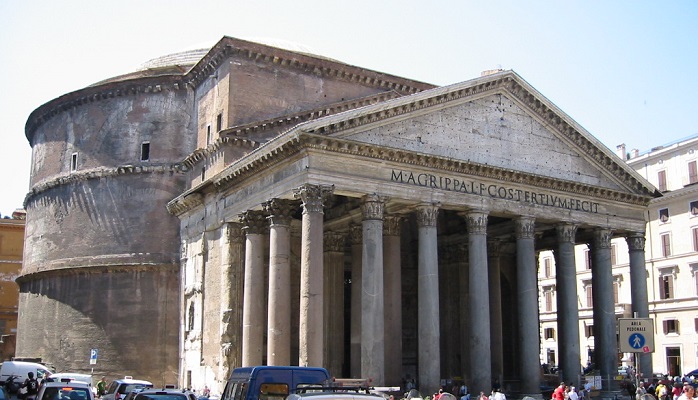
From the Sublime to the Macabre! Your Italy virtual vacation continues with the beautifully preserved Pantheon and a chapel decorated with Friars’ bones.
NOTE: Since travel is still on hold with the pandemic continuing, I’ve started a new blog series offering a virtual vacation and time-travel to my first big trip with Thor in 2008. Italy! Starting with highlight photos posted here on Saturday, Jan. 30, I’ll continue every week. Join us in Rome, Florence, Cinque Terre, Venice, and Milan. Buon viaggio!
The Roman Pantheon is considered a must-see in Rome, for good reason. Literally a temple for “all gods,” it was built by Emperor Hadrian in 120 A.D., though he inscribed it to Marcus Agrippa, the son-in-law of Augustus Caesar, who had built an earlier temple here that burned. The best-preserved ancient Roman structure in modern-day Rome, it escaped destruction by pilfering once the Christians adopted it as a church in the 7th century A.D. It’s been in continuous use for almost 2000 years. When we stepped inside, I marveled at the gleaming marble flooring that still looks brand new (80% is the original marble, in the original design).
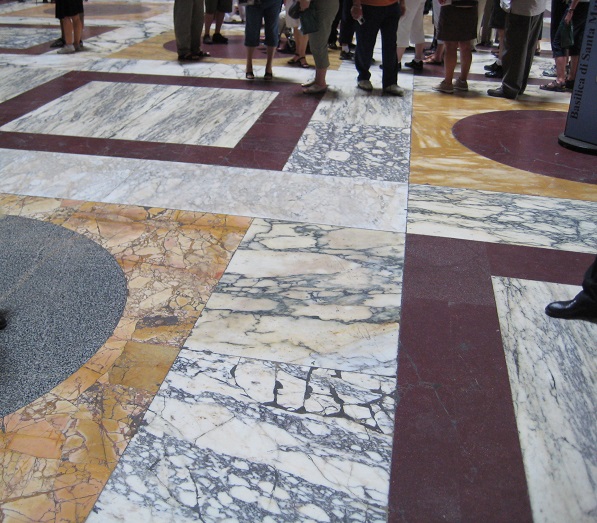
The Pantheon’s immense portico is an impressive tribute to the Greek temples that Hadrian admired, but it’s the soaring dome behind it that made history and inspired many later designers such as Michelangelo. He studied it as the model for his dome of St. Peter’s, and it also inspired the dome of the U.S. Capitol building.
Thor and I first stopped in the busy Piazza della Rotunda on one of our evening rambles, when the Pantheon was closed.
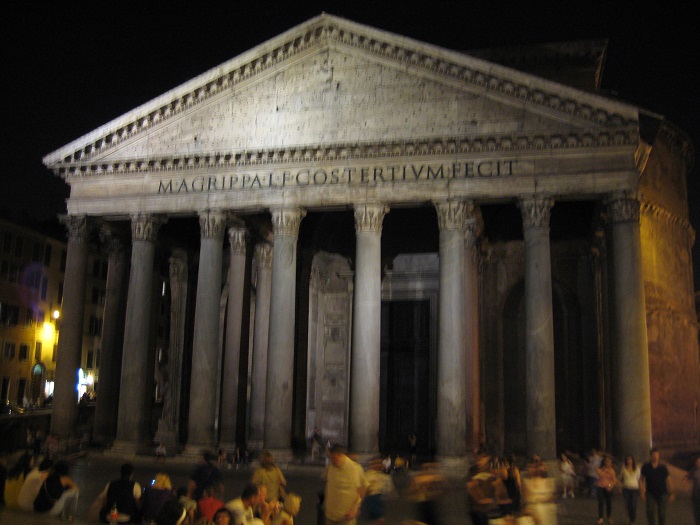
I admired the massive portico columns, 40 feet high, carved from single pieces of red-gray granite quarried in Egypt. They traveled down the Nile and across the Mediterranean, then were topped by Corinthian capitals.
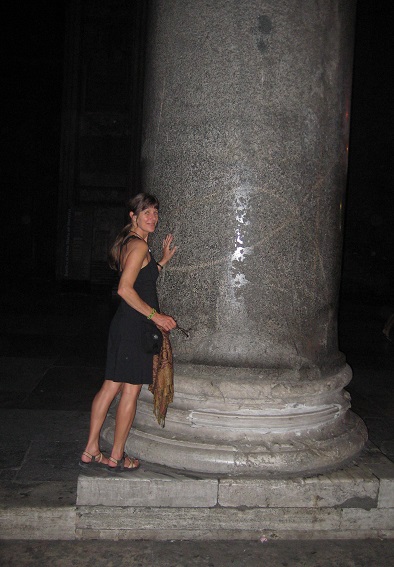
We returned during the day, when the piazza was even more crowded with people eager to see this spectacular temple/church. The original bronze doors (now replaced with copies) were flanked by giant statues of emperors (now missing). The portico ceiling was also bronze, which was scavenged in the 17th century by Pope Urban VIII, who had it melted down in order to build a canopy over the altar in St. Peter’s.
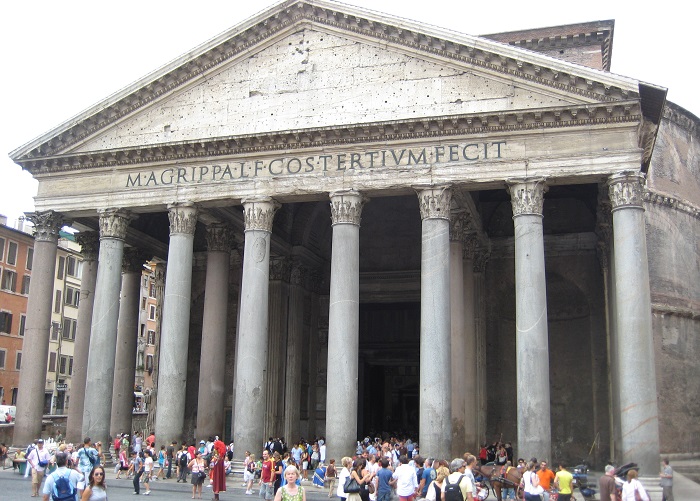
Unfortunately, many of my photos of this Italy trip have gone missing, so I’m relying on Thor’s photos here, and he didn’t take many of the gorgeous interior. But let’s take a look at the modern-day church inside, with Christian images and a few tombs that have replaced the ancient Roman statues. In the main altar niche, the Virgin Mary has replaced a statue of Jupiter.
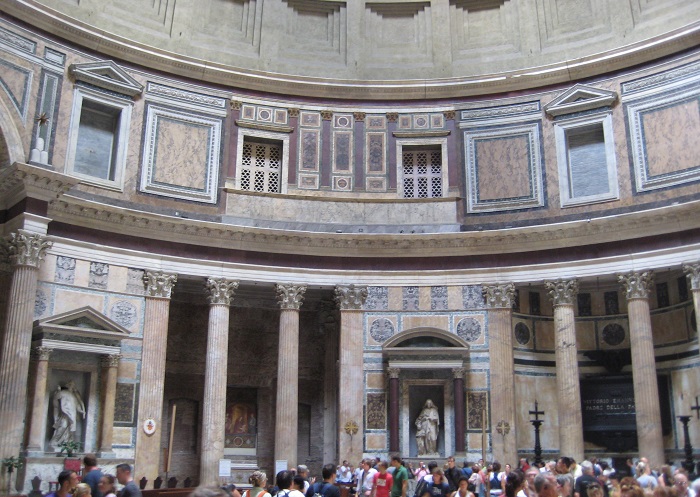
The polished marble flooring, columns, and curved walls gleam, shimmering from the only light source, the oculus, or eye-in-the-sky, at the top of the dome. 30 feet across, it’s open to the sky and rain, which drains from the slanted floor. The bright reflected light from the oculus is just visible at the far left of this photo:
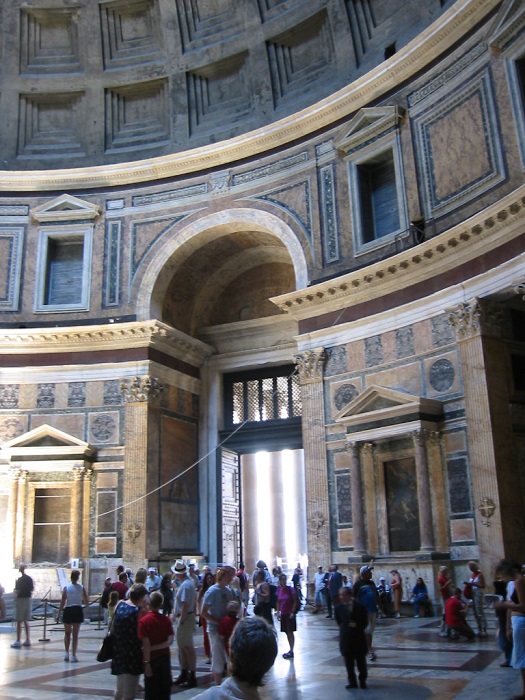
The Romans were master engineers, and the dome construction still awes today’s engineers. 142 feet high and equally wide, it was made from concrete (a Roman invention) of varying thickness and composition from bottom to top, poured over a temporary wooden framework. At the base, it’s 23 feet thick, the concrete mixed with travertine marble. At the top, it’s about 5 feet thick, the concrete mixed with pumice from nearby volcanoes. The coffered ceiling (the indented, stepped squares visible above) make the dome lighter but retain the strength. (Reinforcing brick arches are visible on the exterior.)
Here’s a brief video that Thor made on an earlier trip, which shows the ceiling. Unfortunately, there was scaffolding for maintenance: https://youtu.be/DBuk7uZ1nos
An interesting feature is the tomb of Raphael, who was buried here in 1520 at his request. His live-in lover and model, La Fornarina, was not allowed to attend the ceremony, but next to his tomb is a memorial to his fiancee, the niece of his Cardinal patron. Hmm.
Back in the sunshine of the piazza, we admired the Egyptian obelisk installed in an 18th-century fountain, La Fontana del Pantheon. The Romans were big on all things Egyptian (they emulated the Egyptian practice of deifying their kings), and they imported and raised obelisks in various locations in the city, some still in evidence though relocated. This one in the Piazza della Rotunda was originally from a temple to the Eqyptian goddess Isis.
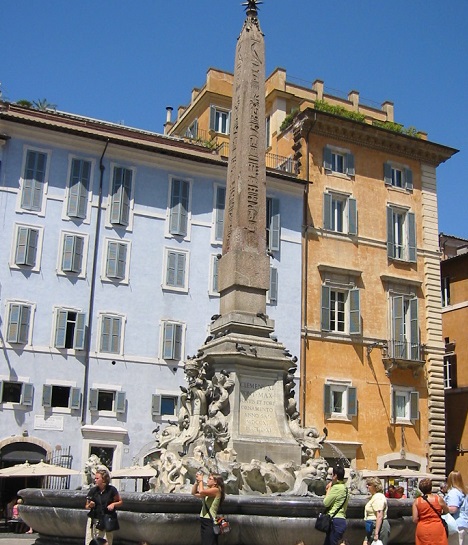
After a pause to admire paintings of a street artist…
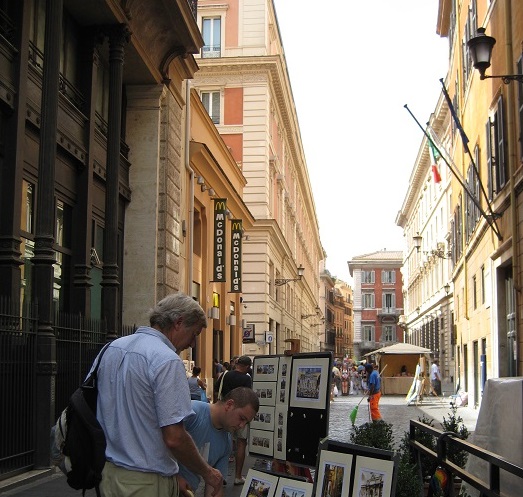
…Thor was eager to visit one of his top destinations: the “Bone Church.” As a paleontologist, Thor is fascinated with bones and skulls, and has quite a collection that he used as a professor at Western Washington University. Here he is during his last lecture before retirement:
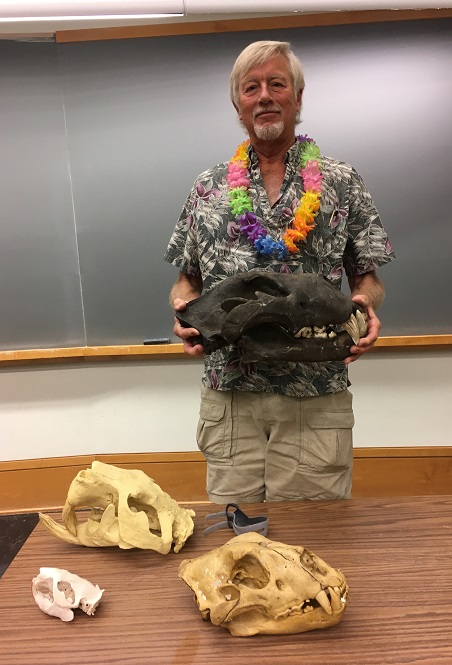
Which is to explain that his “obsession” with bones isn’t entirely grisly, though he did also teach a “Monsters” course…. And so we found ourselves ducking (literally for tall Thor) into the cramped basement crypt — Cripta dei Frati Cappuccini — beneath the Church of Santa Maria della Immacolata Concezione. In a series of small, dim rooms, the bones of around 4,000 Capuchine friars are arranged in artistic (don’t say “ghoulish” to Thor) displays.
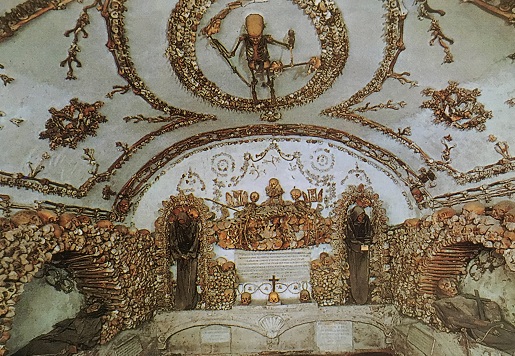
The skeleton on the ceiling, above, holds a scythe and scales of judgement.
The Capuchin friars moved to the church in 1631 and established the crypt, bringing 300 cartloads of deceased friars’ bones with them. Dirt was brought from Jerusalem by order of that same Pope Urban VIII. When more friars died, they were buried for 30 years, then exhumed to add their bones to the displays.
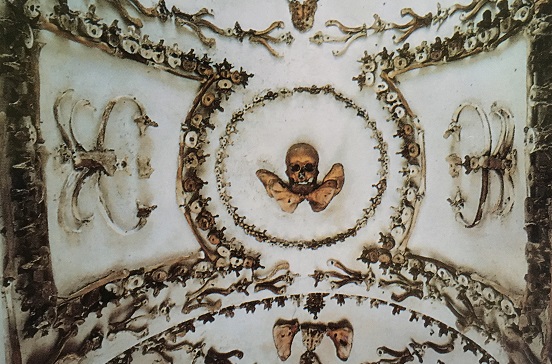
Samuel Clemens (Mark Twain) visited the crypt and wrote of his guide, “The reflection that he must someday be taken apart like an engine or a clock…and worked up into arches and pyramids and hideous frescoes, did not distress this monk in the least. I thought he even looked as if he were thinking, with complacent vanity, that his own skull would look well on top of the heap and his own ribs add a charm to the frescoes which possibly they lacked at present.” From The Innocents Abroad, 1869
Even a chandelier is made from bones:
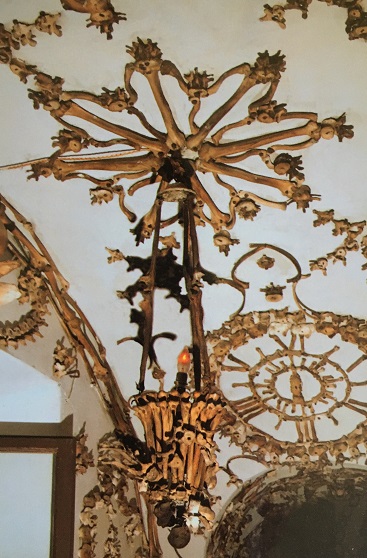
We left with the message beneath one of the displays: “What you are now, we used to be; what we are now, you will be.”
For now, enjoy the air you breathe! Thor and I exited the crypt to find one of the life-giving “vapa” springwater fountains and take some good, long drinks.
Next week: Trasteverre and the Boca della Verita!
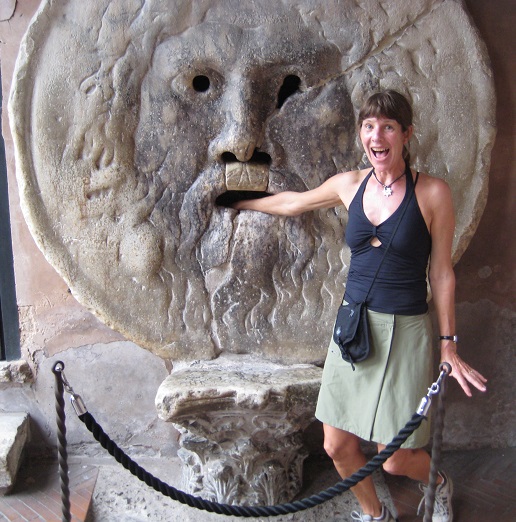
*****
You will find The Rambling Writer’s blog posts here every Saturday. Sara’s latest novel from Book View Cafe is available in print and ebook: The Ariadne Connection. It’s a near-future thriller set in the Greek islands. “Technology triggers a deadly new plague. Can a healer find the cure?” The novel has received the Chanticleer Global Thriller Grand Prize and the Cygnus Award for Speculative Fiction. Sara has recently returned from another research trip in Greece and is back at work on the sequel, The Ariadne Disconnect. Sign up for her quarterly email newsletter at www.sarastamey.com

Anef, I understand! Once was enough for me.
I don’t think I’ve seen the Bone Church, and I’m not sure that I want to. That is seriously weird!